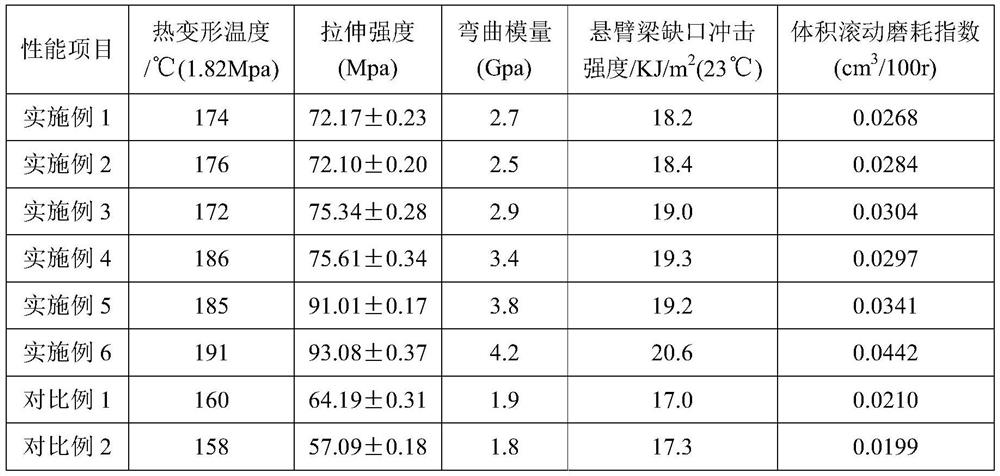Glass fiber composite material and preparation method thereof
A glass fiber and composite material technology, applied in the field of composite materials, can solve the problems of insignificant improvement in performance, weak bonding, and difficulty in improving methods.
- Summary
- Abstract
- Description
- Claims
- Application Information
AI Technical Summary
Problems solved by technology
Method used
Image
Examples
Embodiment 1
[0021] 40 parts of epoxy resin, 40 parts of unsaturated polyester resin, 70 parts of modified glass fiber, 6 parts of modified montmorillonite, 15 parts of graphite, 1 part of chicken feather fiber, 0.5 part of initiator, 0.5 part of curing agent The dibenzoyl oxide is stirred in a stirring tank, cooled to a suitable temperature in a cooling tank, and then granulated in a twin-screw extruder. One of dibenzoyl peroxide, methyl ethyl ketone peroxide, and tert-butyl fat or a composition in any proportion; the above-mentioned initiator is one of methyl ethoxy ethyl ketone and N-tert-butyl peroxybenzoate
Embodiment 2
[0023]50 parts of epoxy resin, 30 parts of unsaturated polyester resin, 65 parts of modified glass fiber, 10 parts of modified montmorillonite, 10 parts of graphite, 2 parts of chicken feather fiber, 0.3 part of initiator methyl ethoxy ethyl ketone, 1 part of curing agent dibenzoyl peroxide is stirred in a stirring tank, cooled to a suitable temperature in a cooling tank, and then granulated in a twin-screw extruder.
Embodiment 3
[0025] 60 parts of epoxy resin, 30 parts of unsaturated polyester resin, 60 parts of modified glass fiber, 5 parts of modified montmorillonite, 6 parts of graphite, 2 parts of chicken feather fiber, 0.3 part of initiator methyl ethoxy ethyl ketone, 1 part of curing agent dibenzoyl peroxide is stirred in a stirring tank, cooled to a suitable temperature in a cooling tank, and then granulated in a twin-screw extruder.
PUM
 Login to View More
Login to View More Abstract
Description
Claims
Application Information
 Login to View More
Login to View More - R&D
- Intellectual Property
- Life Sciences
- Materials
- Tech Scout
- Unparalleled Data Quality
- Higher Quality Content
- 60% Fewer Hallucinations
Browse by: Latest US Patents, China's latest patents, Technical Efficacy Thesaurus, Application Domain, Technology Topic, Popular Technical Reports.
© 2025 PatSnap. All rights reserved.Legal|Privacy policy|Modern Slavery Act Transparency Statement|Sitemap|About US| Contact US: help@patsnap.com

